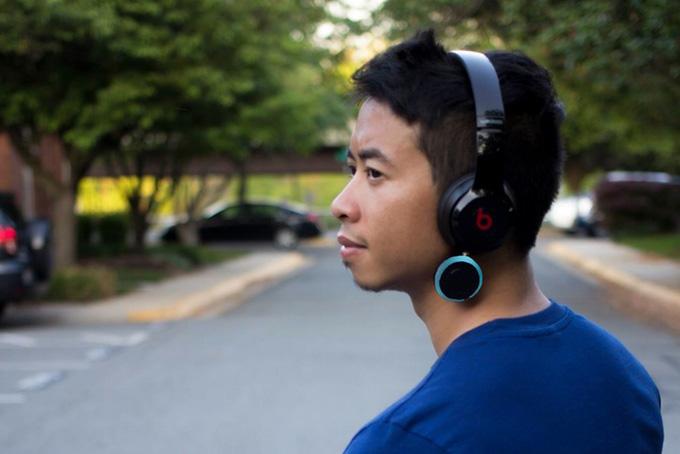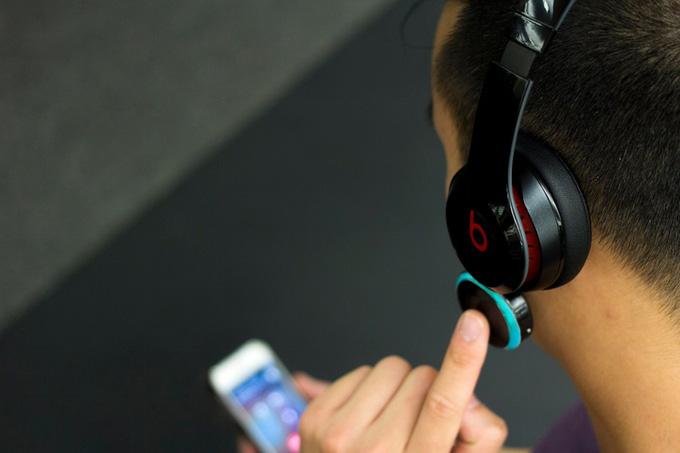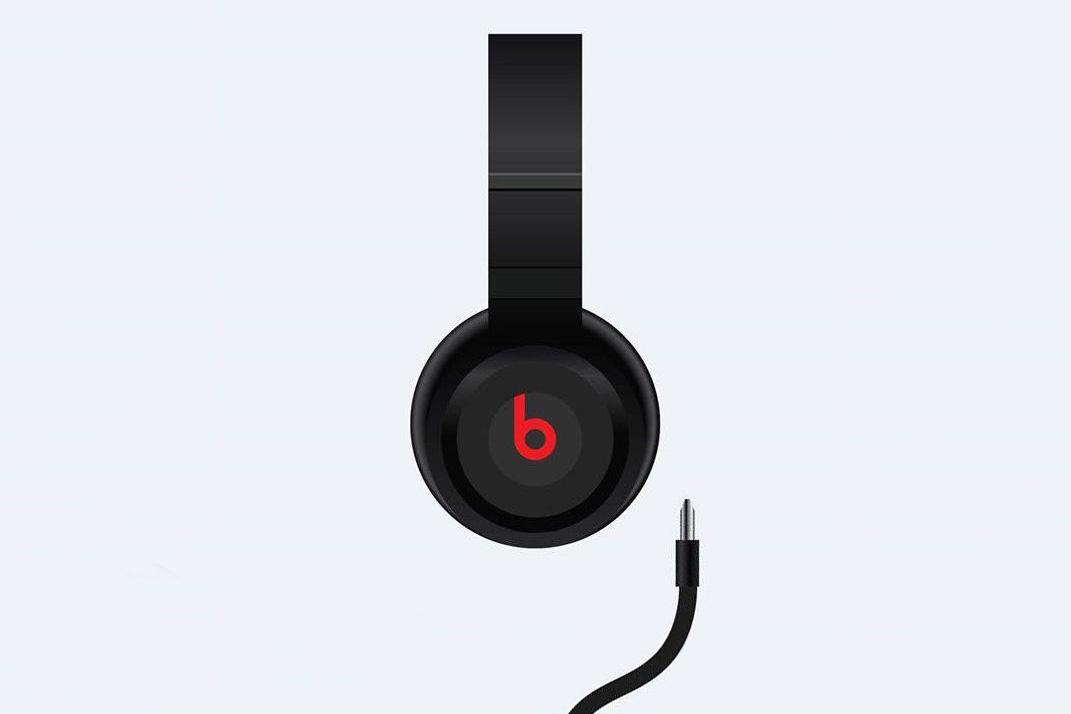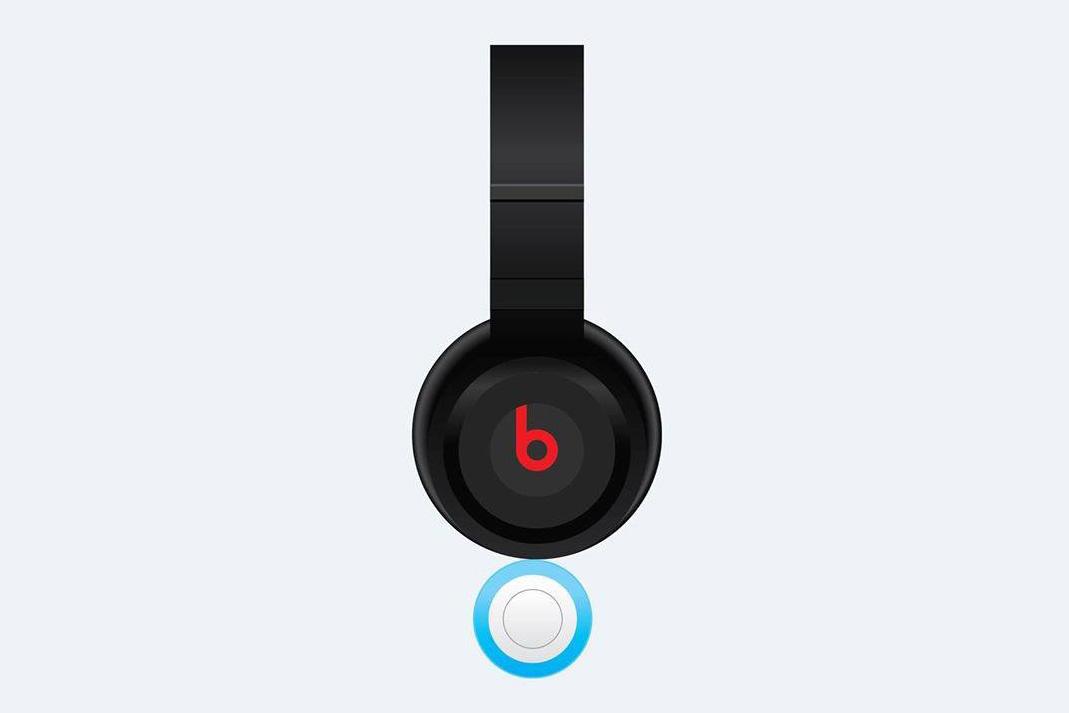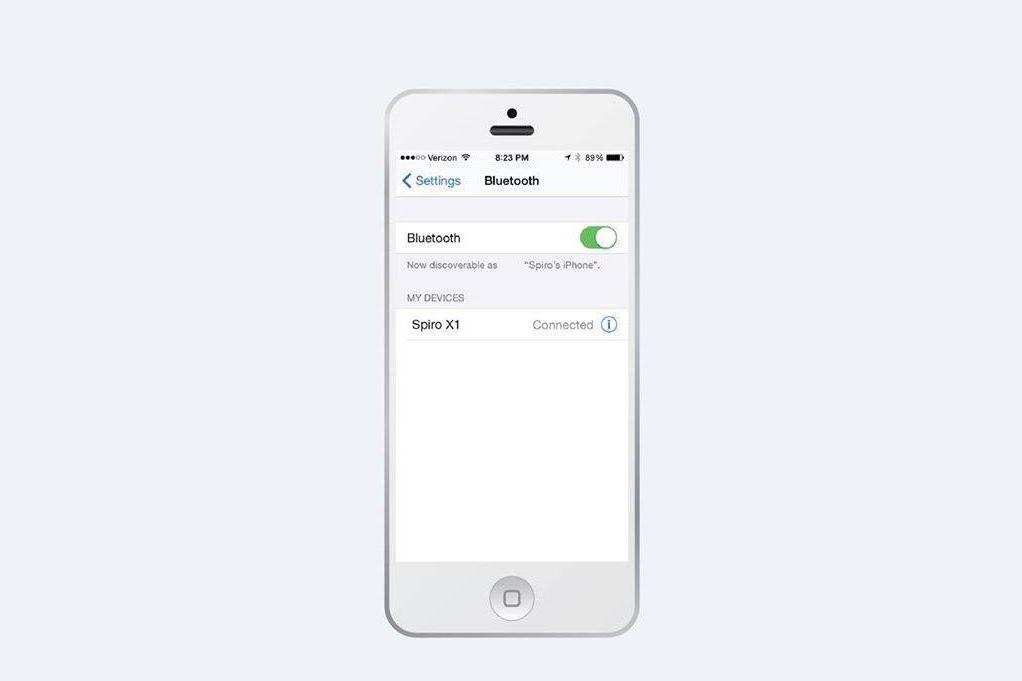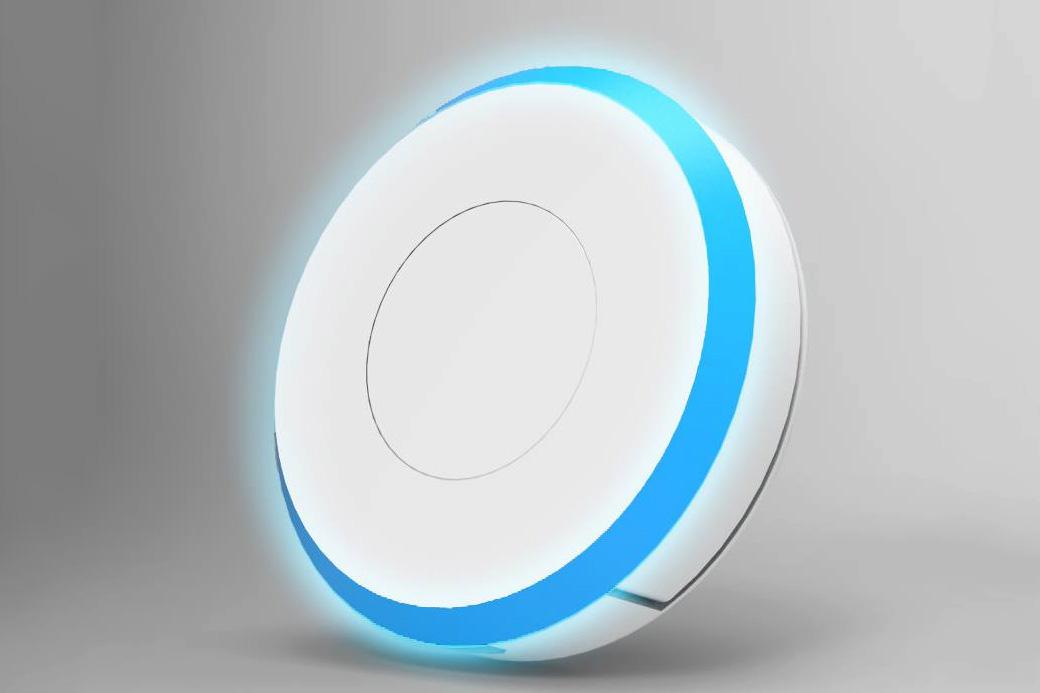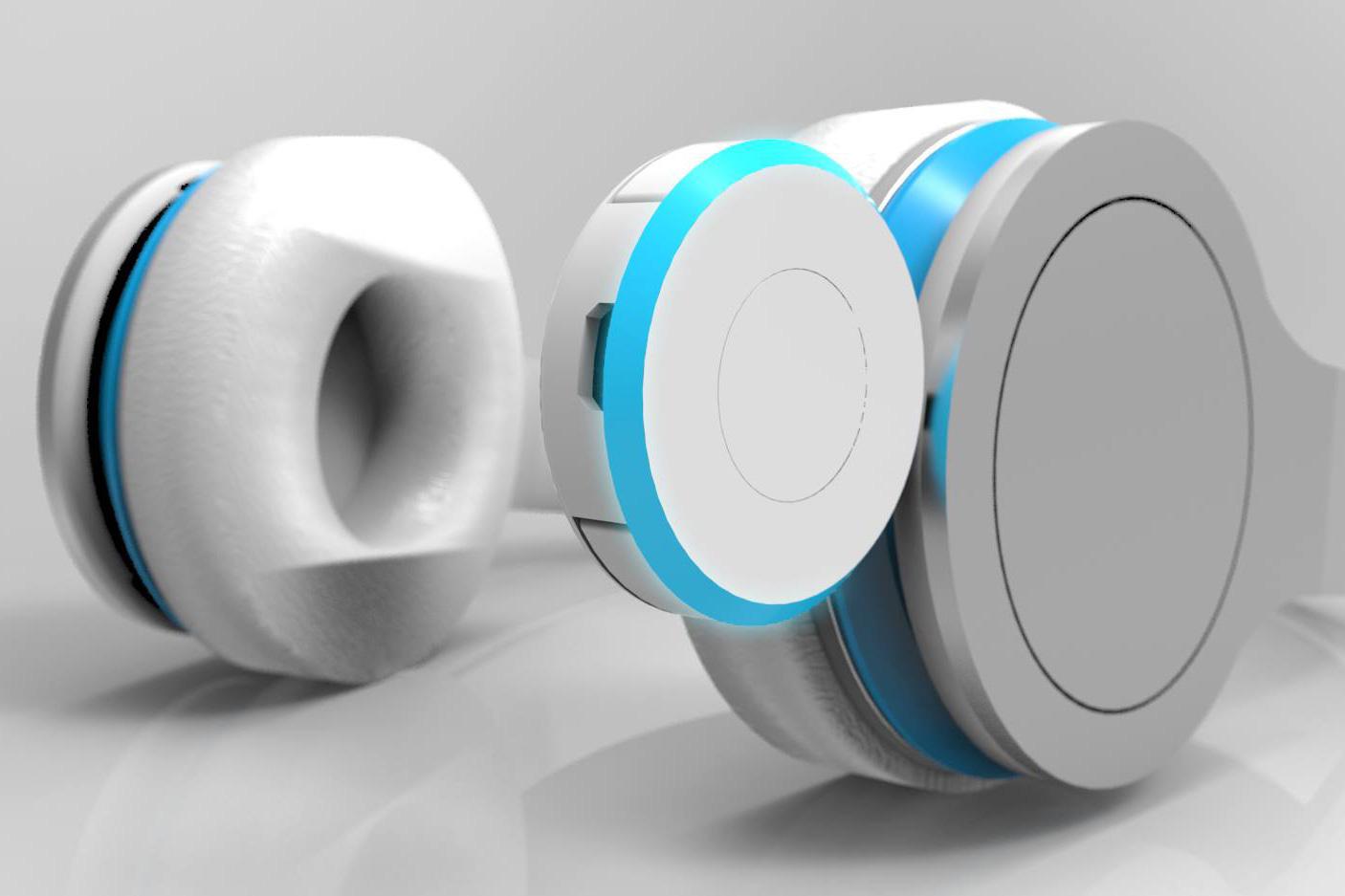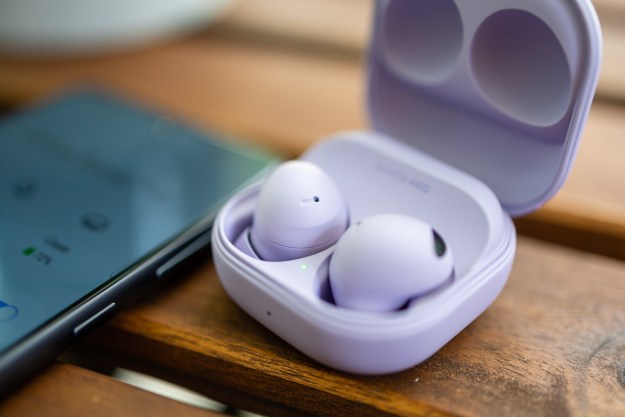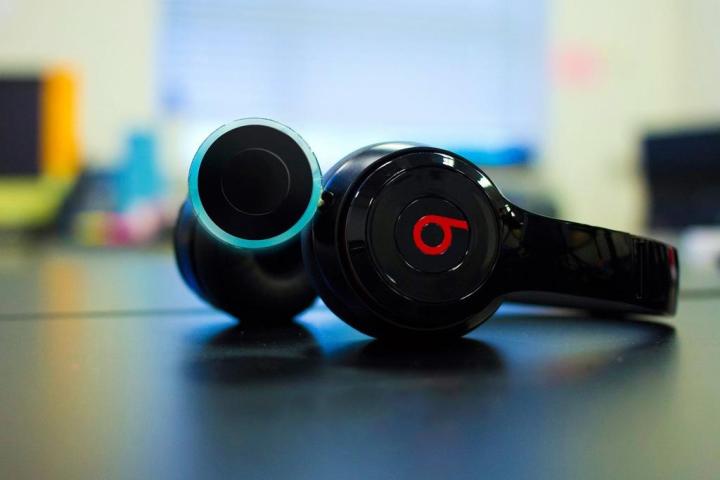
Which makes his debut project as the founder of Spiro all the more remarkable. Greenberg and his two partners, David Lopez and Avery Greenberg have come up with what they think will be the next must-have accessory for music enthusiasts: The $50 Spiro X1, a Bluetooth audio transceiver that can plug into any set of headphones that have detachable cords.
The Spiro X1 looks like something out of TRON.
“We believe that we can be the reinvented headphone wire for the 21st century,” Greenberg confidently declares. Maybe he’s right.
The Spiro X1 looks like something out of TRON. Its round design does a good job of blending in with the look of a lot of popular headphones – especially if the pair you own are made by Beats – but its large size and electric blue LED ring makes it look like you’re trying to give your cans ground-FX style lighting. I’m not sure if Dr. Dre would approve.
It does indeed replace your cord, if the cord you have is of the non-remote variety. Once paired with your phone, the device lets you control volume level, play/pause and answer/end phone calls using its built-in microphone. But there is no ability to skip forward or back a track. “We were considering using the volume buttons [for this feature],” Greenberg says, “[but] it can get confusing… we wanted to keep it simple.”
While a focus on simplicity is commendable, it could also be the X1’s undoing. For many, needing to dig out your phone to change tracks negates the whole premise of the convenience offered by removing the physical wire in the first place.
The other area of weakness that might give some buyers (cough) pause, is battery life. Greenberg claims it’s good for about 5 hours of listening. Granted, that ought to be enough for most people’s daily needs, but if you’re a frequent air traveler, you should probably pack your existing headphone cord as a backup, or have a portable battery in tow.
By now you’re probably thinking, “This has already been done,” right?
In fact, as commenter Raphael Salgado points out below, there have been at least two remarkably similar products on Kickstarter in the recent past. One of them — the $59 BTunes — was successfully funded. However, like X1, the BTunes also skimped on functionality, opting to eliminate the volume adjustment. “Our assumption is that: you pick a playlist (or a radio) to listen and you adjust the volume to your liking, that’s it,” says founder, Dp Deng via email.
Perhaps a better question is, “Why eliminate the cord at all?” After all, a product like the Outdoor Tech Adapt doesn’t sacrifice any functionality, and it’s $10 cheaper. Plus it’s designed to work with any wired headphone, not just detachables. Yet, that subtle difference is why Spiro founder, Daniel Greenberg, thinks the Spiro X1 can gain an audience. “A lot of people we asked said they didn’t want that,” Greenberg says, “Why would you want to plug your wire into something else, just so you can leave your phone in a backpack or a pocket?”
While a focus on simplicity is commendable, it could also be the X1’s undoing.
He’s got a point (and the BTunes’ success certainly adds weight to that idea), except that the lack of a track-skipping feature means the Spiro X1 won’t solve the backpack/pocket problem either.
Greenberg’s determination to eliminate the headphone wire also creates a new problem that the Adapt handily avoids: With a dongle the size of the X1 protruding inflexibly from the bottom of your headphone cup, there’s a genuine risk that an impact will not only damage the X1, it could destroy your detachable cord jack.
Greenberg doesn’t see this as a very likely scenario, but admittedly, he and his team have done very little real-world testing. That is, unless their Kickstarter video counts as testing. “On the first shot of the day, the headphones flew off the guy who was doing parkour and fell 10 feet to the ground,” he recounts, “Somehow our device did not break.” The wear and tear the Spiro X1 experienced during the making of this video seems to constitute Spiro’s entire durability QA process.
None of this is to say that the Spiro X1 has been poorly designed. Despite its almost laughably humble origins (the company is running off of a grand total of $3,000, money which Greenberg says is a combination of a loan from his dad and savings from his part time job as a lifeguard), it has nonetheless managed to attract some decent talent to help make the X1 a reality. The lead engineer and designer on the X1 is Syed Rahman, who is probably best known for his work on the hugely successful Micro 3D printer, which began shipping to backers earlier this year. Greenberg solicited Rahman’s help on the X1 via HH Design, a Facebook group for designers who attend hackathons. Though still very busy with his work on the Micro, Rahman decided to join Greenberg’s tiny team. “I figured it’d be a fun break from all the 3D printing designing I’d been so consumed with,” Rahman told us.
He got a little more than he bargained for. Greenberg was so intent on getting the Spiro X1 to market quickly, Rahman was forced to work much faster than he would normally have liked, noting that he had to crank out “everything from the physical industrial design and all the graphic design for the Kickstarter in a short amount of time.”
The team has had its design vetted by Dragon Innovation, a company that specializes in evaluating the viability of a product before it goes to the manufacturing stage. While not a guarantee of success on its own, it’s worth noting that other successful crowdfunded companies such as Orbotix and LIFX have used Dragon to vet their designs.
Even though the X1 is his first hardware product, Greenberg’s convinced he can ship to backers in their choice of color (black or white) and jack size (3.5mm or 2.5mm) in time for the holidays. Assuming 30 days for his funding period, that barely leaves 6 months to go from prototype to shipped product. On the other hand, Greenberg could be wildly off the mark. More experienced companies have underestimated their timelines on Kickstarter, much to the irritation of backers. Hardware is after all, hard, as they say.
Greenberg only has to convince 1,500 people to get to his $75,000 funding goal – as we write this, they’ve nabbed $6,500 from 109 backers with 19 days left to go. But with its awkward design, limited battery life, and lack of a track skipping feature, my concern is that there may not be enough people looking to shell out $50 to partially replace the remote headphone cord their cans shipped with.
But that’s OK. Greenberg has plenty of time to find the next big thing. And with his drive, passion and energy, I wouldn’t want to bet against him.
Updated on 6-02-2015 by Simon Cohen: Added the section acknowledging similar crowdfunding projects
